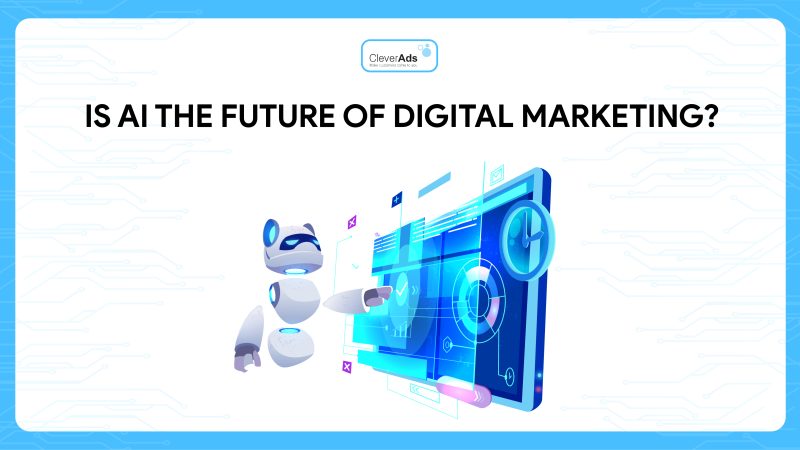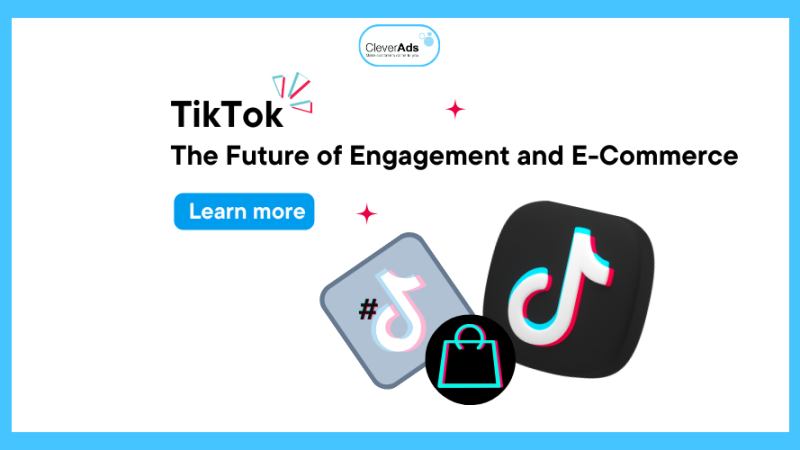What is Content Marketing
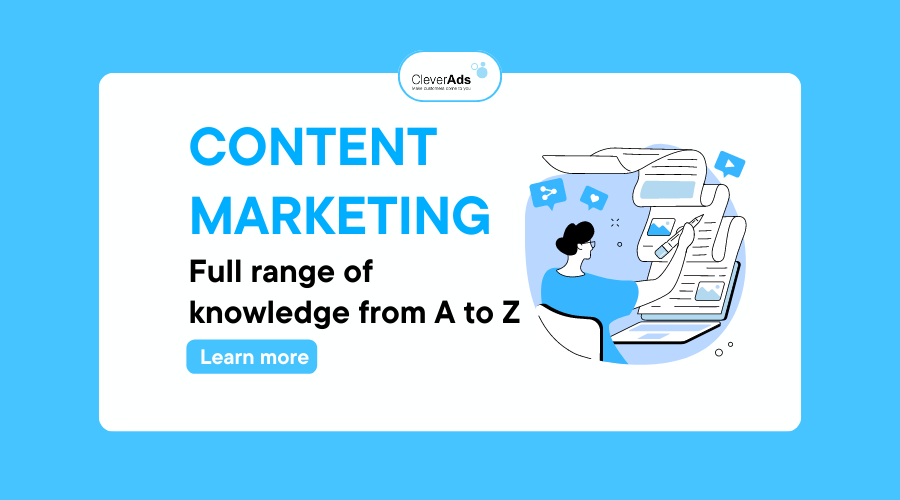
Content marketing helps businesses bring valuable content to customers, attracting, satisfying, and satisfying their needs. In this article, CleverAds will provide complete knowledge about content marketing, the types, and how to implement an effective content marketing strategy for your business.
1. What is Content Marketing?
Content marketing uses content for marketing a product or service by providing value in various forms. Content marketing aims to reach customers and provide them with value.
Content marketing is a long-term strategy for building relationships with potential customers at every stage of their journey.
To reach customers, businesses can:
- Post content on social media platforms like Instagram and Facebook
- Upload video content to online video platforms, such as Youtube
- Apply SEO to optimize content to appear on the first page of search results
To provide value, a brand can:
- Create high-quality content to educate people about what they want to learn
- Create content that meets everyone’s needs
Content marketing is about serving the customer’s needs but ultimately serving the purpose of the business in the long run (e.g., increasing revenue). This can be done through blog posts or articles, videos, podcasts, or other forms of communication.
So, what is the exact definition of content marketing?
Content marketing is the process of planning, creating, distributing, sharing, and publishing content through channels such as social networks, blogs, websites, podcasts, apps, press releases, print publications, etc. The goal is to reach the target audience and increase brand awareness, sales, engagement, and customer loyalty.
2. Classification of Content Marketing Forms
There are many types of content marketing that you can choose to use in your strategy — here are some examples of the most popular ones:
2.1. Online Content Marketing
Online content marketing is just any content you post online. And in this case, it’s your business website. An online content marketing strategy will help you rank higher in search engine results pages and help you reach the right people at the right time.
CleverAds homepage is an example, a website that attracts visitors with specific content about information about our products and services.
2.2. Content marketing on social networks
With more than 4.2 billion global social media users, many businesses invest heavily in social media marketing. There are many platforms businesses can use (e.g., Facebook, Instagram, Pinterest, LinkedIn, Snapchat), and there are also ways for you to share content on each platform (e.g., photos, videos, live broadcast).
2.3. Infographic Content Marketing
Infographics include content, information, and data designed as graphics. With simple words, concise sentences, and clear images, infographics are a great way to communicate your content in an easy-to-understand way. They work well if you want to distill an educational or complex topic so that any audience can understand.”
2.4. Blog Content Marketing
Blogs are very effective inbound content that allows you to express your creativity on the topics you want. With a blog, you can do things like to promote your content and blog posts through links, social shares, and product information combinations.”
2.5. Content Marketing Podcasts
Over 60 million podcast listeners on Spotify and Apple Podcasts platforms. For this reason, many businesses and media have started creating and sharing their podcasts.
Podcasts allow much creativity and can be about any topic you choose. Additionally, you can define other podcast-related factors, such as who is watching the podcast, where you advertise the podcast and the length of the episodes.
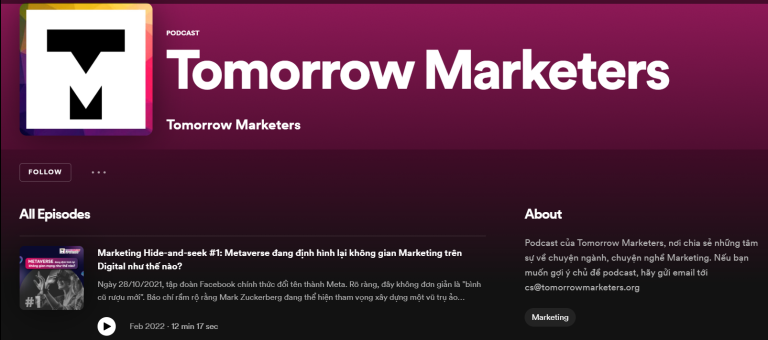
(nguồn: Tomorrow Marketer)
2.6. Video Content Marketing
73% of consumers say they enjoy learning about a brand’s product or service through video. Plus, video marketing can increase conversions, improve ROI, and help you build relationships with your viewers. You can share your video content on social media platforms, landing pages, or your partner websites.
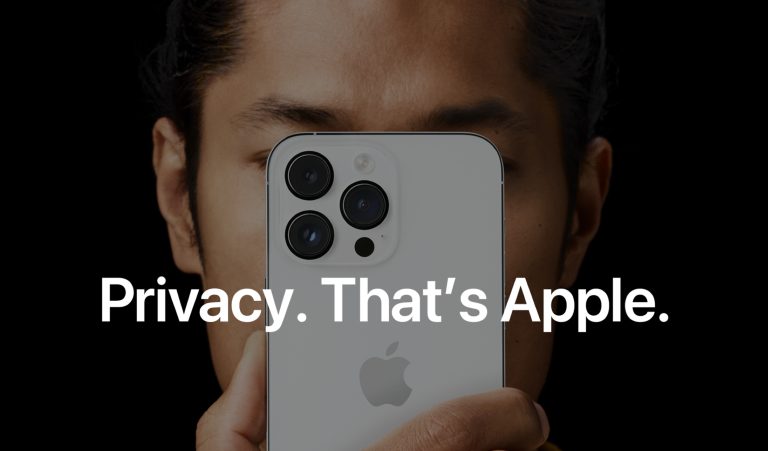
(source: Apple)
2.7. Paid Ad Content Marketing
Paid advertising can help you reach a broad audience and position your content in all the places you want it to be seen — delivered advertising is especially beneficial when combined with inbound marketing. There are many places you can share paid ads, including on social media, landing pages, banners, and sponsored content.”
3. Content marketing in the customer journey
Building trust with consumers is a challenging process. The customer journey from the moment they first learn about your brand to when they purchase can be divided into three stages.
Awareness stage
The buying journey begins at the awareness stage, where prospects identify their needs and concerns. The types of content that work best at this stage are explanatory articles and tutorials that address what consumers are suffering from.
Let’s say you have recurring headaches and use search engines like Google to ask, What causes headaches? As a customer, you’re trying to find a solution to a problem and haven’t found the exact solution yet.”
Consideration stage
During the review phase, the user is interested in finding remedies to solve the problem. Therefore, the content in this stage should be informative and subtly mention how your product or service can become the ideal solution they are looking for.
Customers may be looking for blog posts or research that answer the question, “What are natural ways to treat headaches?” Customers in this stage know there is a solution to the problem and are looking for the right answer.
Decision stage
In the decision stage, the buyer is ready to decide which solution will help them solve their problem. Consumers are making comparisons and looking for the best options.
Content marketing campaigns at this stage can convert leads into buyers and address the unique value proposition of your solution—what makes your business stand out in a fiercely competitive crowd market.
For example, a company that focuses on pain relief or headache supplements might create blogs and videos about why their options are more effective. Content should be persuasive and informative and address any fears or difficulties consumers may have to overcome before buying.
4. Content marketing strategy for every business
4.1. Set goals
The first step in your content marketing strategy is to set goals. These goals should be explicitly defined for your business — they will likely complement your broader marketing goals.
Here are some examples of content marketing goals:
- Raise brand awareness
- Boost revenue
- Increase conversion rate
- Improve customer loyalty to the brand
- Increase customer engagement
- Build relationships and trust with potential customers
- Attract strategic partners
4.2. Define KPIs
Next, define the KPIs for the goals you just set. KPIs are measurable data metrics that you can use to measure actual performance against your goals.
|
Target |
Relevant KPIs |
|
Raise brand awareness |
Website traffic
Social media followers Tracking subscriptions mentions (of customers and partners) |
|
Boost revenue |
Daily sales
Website traffic |
|
Increase conversion rate |
Conversion rate Competitive price trend |
|
Improve loyalty of customers with brand |
Old customers Romoters Product reviews Referrals |
|
Increase customer engagement |
Like, share, follow, mention, backlinks |
|
Build relationships and trust with potential customers |
Returning Customers, Promoters, Followers, Mentions |
| Attract strategic partners |
New partnerships, mentions, backlinks |
4.3. Define content types
Next, you need the type of content you are going to create. To do this, consider your target audience and customer persona.
You can answer the following questions about your target audience to help you narrow down the types of content that work for them:
What do they need from you?
What challenges are they looking to overcome?
Why do they need your product or service?
How can you help them succeed?
Where do they spend their time?
Then compare the different types of content we mentioned earlier to decide what content you will create and publish.
4.4. Define content delivery channels
Once you’ve decided on the type of content you create, it’s time to choose the channels and platforms to publish them on. Where will you share your content?
For some types of content, the channel needs to be something that must be clearly defined. For example, if you’re creating content on Facebook, your channel will be the social platform itself.
4.5. Determine the budget
Now it’s time to define a budget. First, consider the type of content you create and the channel you market it to.
Next, ask yourself the following questions to determine your budget:
- Do you need to purchase any software or technology to create content (such as graphic design software like Adobe Photoshop, a Canva subscription, or a camera to take high-quality photos and videos)?
- Do you need to hire any marketers or designers (such as artists, writers, and editors)?
- Do you need to pay for ad space?
- Do you need access to specific tools or resources to enhance or measure your content?
- Record your responses and determine what factors directly affect your budget — whether it’s an increase or a decrease from what you might have estimated.
4.6. Create and publish content
It’s time to start creating and distributing your content to your customers. To ensure you’re consistently producing and sharing content regularly, consider scheduling your content for social media or an editorial calendar.
This will keep you up to date with all the content being created and allow you to schedule it explicitly.
Read more:
4.7. Measure and analyze results.
Finally, analyze and measure your results so you can promptly make any necessary changes to improve the quality of your content to reach a wider audience.
Contrast that with your goals and KPIs to determine the success of your content marketing strategy. Are you achieving your goals and KPIs? Were you close to them, or were you wrong in your estimate?
5. How to measure effective content marketing
CleverAds always strives to meet the following criteria to ensure all of our content meets the needs of you and other readers. And here CleverAds will share with you the criteria for you to apply to your content:”
5.1. Provide value beyond your product.
Content marketing is not only about sharing the advantages of a product to turn readers into customers. Instead, it’s important to provide value that helps your customers do something more efficiently and improve their quality of life. So try to create content that solves your customers’ most pressing needs.
5.2. Consistency in brand voice and image
Whether it’s a blog post, website, or ebook, your content should have a unified brand tone and image. That’s why orienting your writing style, and brand image is so important. Both of these factors will ensure that:
Your brand image is the same across all platforms and channels.
Likewise, your brand voice sounds unified across all communication channels.
Once you have both of these, give them to your content creators and designers. Content marketing publications will become much more cohesive and consistent, keep readers coming back to you as a resource, and give you a more professional look.”
5.3. Timely and attractive
How often do your clients make financial plans at the beginning of the year? If you’re a financial startup, you can publish a blog post in January about quarterly budgeting to avoid clerical errors and overspending.
At the end of the post, you can either call to action for your service or lead the user to a downloadable template after providing the email.
This is an example of timely and engaging content marketing. If you know customer behavior and spending patterns throughout the year, this is a great advantage. You should produce content and offers that appeal to them at the right time, meeting their immediate needs.
6. Conclusion
With the above article, CleverAds has learned about content marketing: definitions, examples, and how to apply in the customer journey, along with the steps you need to know to build a content marketing strategy for your brand. Aside from a solid strategy, remember to continually grow and add more value to the content you create every day.”

